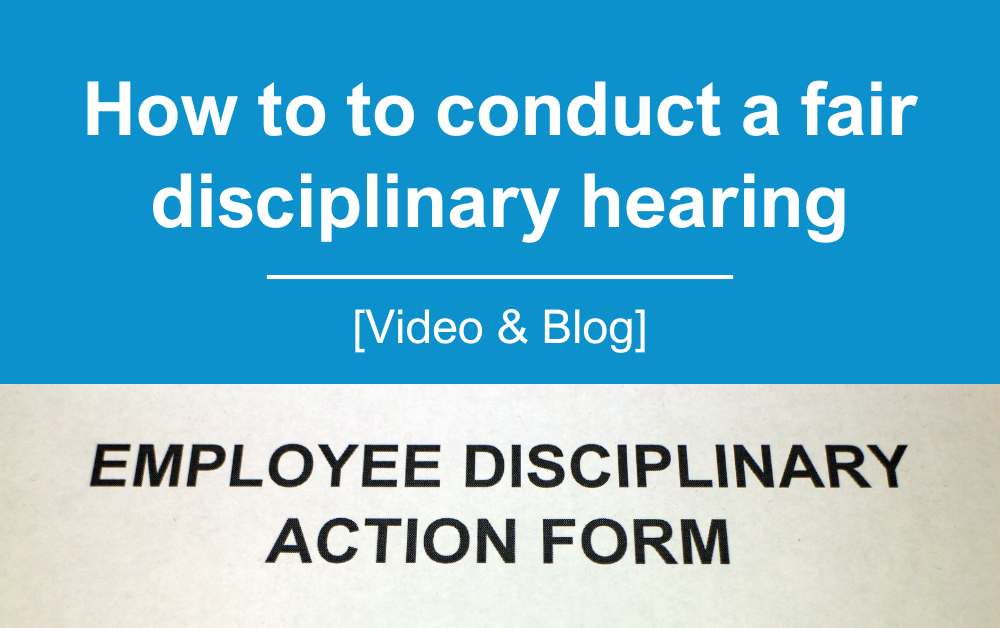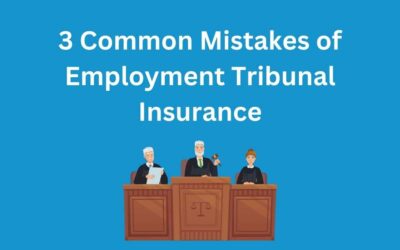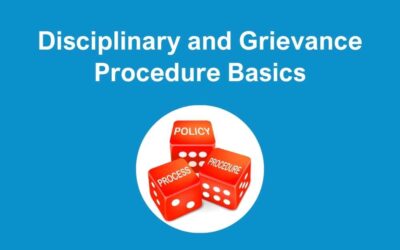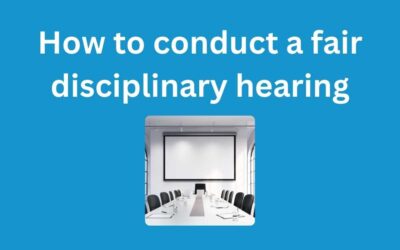Handling employee misconduct or performance concerns can be challenging, but following a clear disciplinary hearing procedure ensures fairness, consistency, and legal compliance. Whether you’re unsure what is a disciplinary hearing, how to conduct a disciplinary meeting with an employee, or simply want to improve your internal processes, this guide will walk you through each step.
What is a Disciplinary Hearing?
A disciplinary hearing is a formal meeting between an employer and an employee to address allegations of misconduct or performance issues. This process is a critical component of the disciplinary hearing procedure, ensuring that both parties have the opportunity to present their case in a structured and fair environment.
Conducting a disciplinary hearing correctly is vital for maintaining workplace discipline and upholding legal standards. It provides a platform for employers to explain the issues at hand and for employees to respond, ensuring transparency and fairness throughout the process.
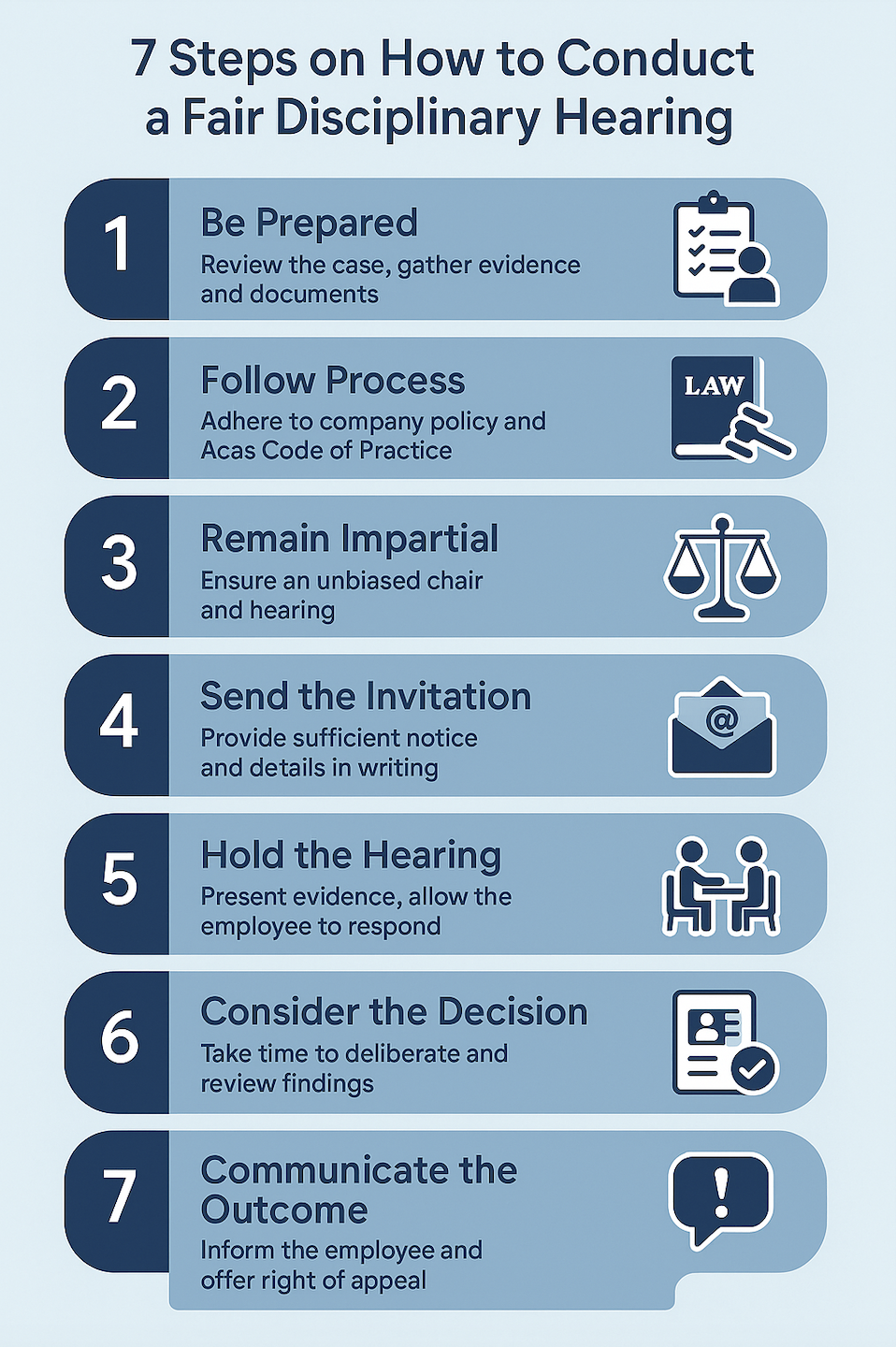
Step 1: Conduct a Thorough Investigation
Before initiating a disciplinary hearing, it’s essential to carry out a comprehensive investigation. This involves gathering all relevant facts, interviewing witnesses, and reviewing any pertinent documents or evidence. The goal is to establish a clear understanding of the situation to determine whether formal disciplinary action is warranted. Ask yourself the following questions when establishing the facts:
- What is the disciplinary issue that has happened?
- When did it happen?
- Why did the alleged misconduct take place?
- Who was involved, and were there any witnesses? (also consider taking a witness statement)?
- Is there any supporting evidence, such as CCTV footage or documents?
Anything verbalised at investigation meetings, and any investigation findings must be documented. These will become important reference documents if a formal disciplinary hearing becomes necessary.
Avoid Opinions
Your investigation should be fact-based, and also avoid opinions—whether from others or assumptions about the employee’s actions. The length and depth of the investigation should match the issue. For instance, if an employee is persistently late, you would only need to speak with them. However, if theft is suspected, you may need to review CCTV footage and interview all staff on duty.
Unlike a disciplinary hearing, investigation meetings are informal. Therefore, you do not need to provide notice or allow representation.
Step 2: Inform the Employee
Once the investigation is complete and if it indicates that a disciplinary hearing is necessary, inform the employee in writing. The notification should include:
- The specific allegations or concerns
- The date, time, and location of the hearing
- The employee’s right to be accompanied by a colleague or trade union representative
- Any evidence that will be presented
Providing this information ensures that the employee understands what is a disciplinary hearing and can prepare adequately.
Step 3: Prepare for the Hearing
Effective preparation is key to conducting a disciplinary meeting with an employee. This includes:
- Reviewing all evidence and documentation
- Preparing questions to clarify facts
- Ensuring that the hearing panel is impartial
- Arranging for a note-taker to document the proceedings
Employees must be given reasonable notice ahead of the meeting to prepare adequately. More specifically, a minimum of two working days’ notice is recommended. This allows the employee sufficient time to gather evidence, seek representation, and also prepare their case.
Step 4: Conduct the Disciplinary Hearing
During the hearing, follow a structured approach:
-
Opening the Meeting: Explain the purpose of the hearing and outline the procedure.
-
Presenting the Case: Detail the allegations and present the supporting evidence.
-
Employee’s Response: Allow the employee to respond to the allegations, present their evidence, and call witnesses if necessary.
-
Discussion: Engage in a dialogue to clarify any points and ensure all relevant information is considered.
-
Adjournment: After the discussion, adjourn the meeting to deliberate and make a decision.
Understanding what happens at a disciplinary hearing helps both employers and employees navigate the process with confidence.
Step 5: Decide on the Outcome
After the hearing, assess all the information presented to determine the appropriate course of action. Possible outcomes include:
- No action if the allegations are unsubstantiated
- A verbal or written warning
- Suspension or demotion
- Termination of employment
Written Warning
If an employee receives a written warning, it should outline:
- The nature of the misconduct
- Expectations for improvement
- Consequences of further infractions
- Support available for the employee
Final Written Warning
If misconduct persists, a final written warning should:
- Clearly state the severity of the situation
- Set a timeframe for improvement
- Warn that further breaches may result in dismissal
Dismissal for Gross Misconduct
In cases of gross misconduct, dismissal may be necessary. Therefore, examples of gross misconduct include:
- Theft
- Physical violence
- Serious breaches of health and safety
- Fraud or major breaches of company policy
Employers should seek legal advice before proceeding with dismissal to avoid claims of unfair dismissal. Ensure that the decision is proportionate to the misconduct and consistent with company policies.
Step 6: Communicate the Decision
Inform the employee of the outcome in writing, detailing:
-
The decision and the reasons behind it
-
Any disciplinary action to be taken
-
The right to appeal and the process for doing so
Clear communication reinforces the fairness of the disciplinary hearing procedure.
Step 7: Follow-Up
Implement any agreed-upon actions and monitor the employee’s performance or behaviour as necessary. Maintain records of the hearing and any subsequent steps taken.
How to Structure the disciplinary hearing
A well-structured hearing should have a clear format:
1. Opening the Hearing:
- Introduce attendees and also outline the hearing’s purpose.
- Explain the procedure and possible outcomes.
2. Presenting the Case:
- The employer presents evidence and explains the allegations.
- The employee is given an opportunity to respond.
3. Employee’s Defence:
- The employee can provide their explanation and present any evidence or witnesses.
4. Employer’s Questions:
- The employer and panel can ask questions for clarification.
5. Adjournment:
- The disciplinary hearing is adjourned to allow for a fair and impartial decision.
Handling an Employment Tribunal Following a Disciplinary Hearing
If an employee files a claim for unfair dismissal or discrimination, the employer should:
- Review all documentation and ensure that due process was followed
- Seek legal advice from an employment law specialist
- Prepare for the tribunal by understanding the legal framework
- Maintain professional and confidential communication regarding the case
Preventing Disciplinary Issues Through Employee Engagement
Maintaining high employee morale and engagement can reduce the likelihood of disciplinary issues. A positive work environment, clear communication, and also regular feedback can prevent conflicts from escalating to formal disciplinary hearing.
Key Takeaways:
- A well-structured disciplinary hearing ensures fairness and legal compliance.
- Employers should conduct thorough investigations and document findings.
- Employees must be given advance notice and the right to representation.
- Outcomes should be proportionate and well-documented.
- Preventative measures, such as improving employee morale, can reduce disciplinary cases.
Download the Free Employee Disciplinary Action Form
By following these best practices, businesses can ensure that a disciplinary hearing is conducted fairly and in compliance with employment laws. Therefore, minimising the risk of disputes and tribunal claims.
Contact our HR experts for personalised advice on disciplinary procedures.

